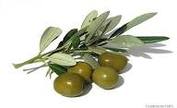Coconut milk is high in fiber and vitamins C,E,B1,B3, and B6. It also contains minerals like iron, selenium, calcium, magnesium and phosphorous. If you are lactose intolerant and can not eat dairy, coconut milk is a good option for you.
Coconuts contain significant amounts of fat in the form of medium chain saturated fatty acids (MCFAs) in particular, one called lauric acid. Lauric acid is converted into a compound called monolaurin which is antiviral and antibacterial. It is thought that consumption of coconut milk may help protect the body from infections and viruses. The consumption of coconut milk is thought to improve your immune system health.
Health Benefits
Heart Disease & Blood Pressure
The medium-chain saturated fatty acids in coconut milk may also improve heart health. They may also kill the three major types of atherogenic organisms -- bacteria that cause plaque formation in the arteries -- that may lead to heart disease. Because coconuts contain minerals important for circulation and controlling blood flow, coconut milk is also useful for lowering blood pressure and keeping blood vessels flexible, elastic and free from plaque buildup.
Healthy Skin and Hair
The fatty acids in coconut milk are a natural antiseptic and may help treat dandruff, skin infections, wounds and dry, itchy skin. I use coconut milk as a moisture on my skin every day, because of the antiseptic qualities.
Weight Loss
People who include more healthy fats in their diet, such as the medium-chain triglycerides in coconut milk, eat less than those who don't get enough fat. Fats help the body feel full and satiate the brain receptors that control the appetite. The fat in coconut milk may also increase metabolism and perhaps increase weight loss on a reduced-calorie diet.
Improves Digestion and Relieves Constipation
Coconut milk nourishes the digestive lining due to its electrolytes and healthy fats, improving gut health and preventing conditions like IBS.
Manages Blood Sugar and Controls Diabetes
The fat content of coconut milk can help slow the rate at which sugar is released into the bloodstream, better controlling insulin levels and preventing a “sugar high” or worse, conditions like diabetes. This is one reason why coconut milk is especially good to add to sweetened recipes, like desserts. Coconut milk’s MCTs are also a preferred source of energy for the body rather than sugar.
Prevents Joint Inflammation and Arthritis
Coconut milk’s MCTs can help lower inflammation, which is associated with arthritis and general joint or muscle aches and pains.
So next time you bake a dessert think coconut milk it's good for your body and pretty tasty.
Tamara
Coconuts contain significant amounts of fat in the form of medium chain saturated fatty acids (MCFAs) in particular, one called lauric acid. Lauric acid is converted into a compound called monolaurin which is antiviral and antibacterial. It is thought that consumption of coconut milk may help protect the body from infections and viruses. The consumption of coconut milk is thought to improve your immune system health.
Health Benefits
Heart Disease & Blood Pressure
The medium-chain saturated fatty acids in coconut milk may also improve heart health. They may also kill the three major types of atherogenic organisms -- bacteria that cause plaque formation in the arteries -- that may lead to heart disease. Because coconuts contain minerals important for circulation and controlling blood flow, coconut milk is also useful for lowering blood pressure and keeping blood vessels flexible, elastic and free from plaque buildup.
Healthy Skin and Hair
The fatty acids in coconut milk are a natural antiseptic and may help treat dandruff, skin infections, wounds and dry, itchy skin. I use coconut milk as a moisture on my skin every day, because of the antiseptic qualities.
Weight Loss
People who include more healthy fats in their diet, such as the medium-chain triglycerides in coconut milk, eat less than those who don't get enough fat. Fats help the body feel full and satiate the brain receptors that control the appetite. The fat in coconut milk may also increase metabolism and perhaps increase weight loss on a reduced-calorie diet.
Improves Digestion and Relieves Constipation
Coconut milk nourishes the digestive lining due to its electrolytes and healthy fats, improving gut health and preventing conditions like IBS.
Manages Blood Sugar and Controls Diabetes
The fat content of coconut milk can help slow the rate at which sugar is released into the bloodstream, better controlling insulin levels and preventing a “sugar high” or worse, conditions like diabetes. This is one reason why coconut milk is especially good to add to sweetened recipes, like desserts. Coconut milk’s MCTs are also a preferred source of energy for the body rather than sugar.
Prevents Joint Inflammation and Arthritis
Coconut milk’s MCTs can help lower inflammation, which is associated with arthritis and general joint or muscle aches and pains.
So next time you bake a dessert think coconut milk it's good for your body and pretty tasty.
Tamara

 RSS Feed
RSS Feed
